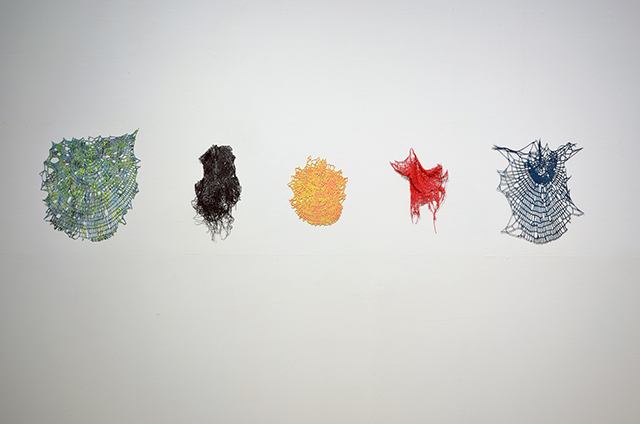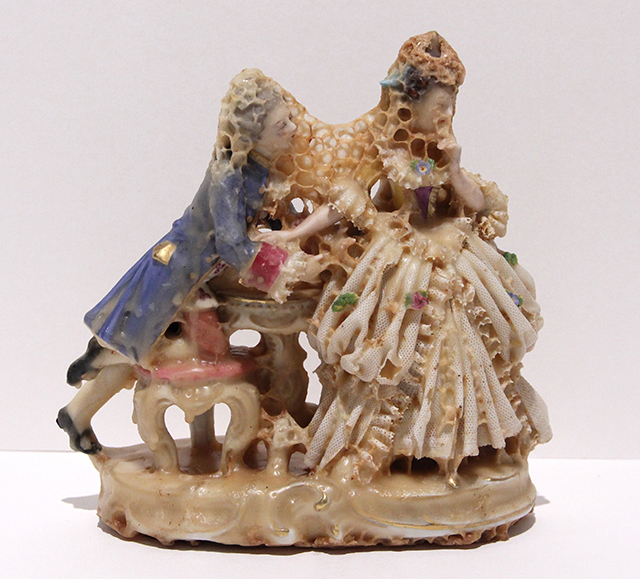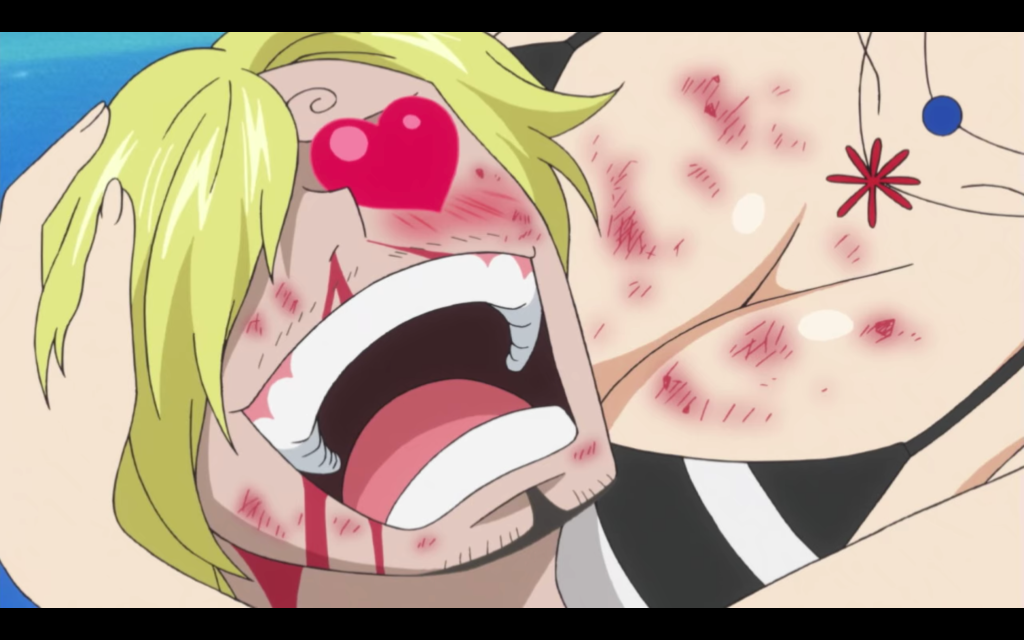Though defining exactly what art is is a near-impossible art all its own, human involvement seems to be an essential tenet, whether it’s in creation or conceptualization. Yet nature and the wide range of animals within its domain have produced aesthetically astounding creations en masse since before humanity’s time. Couldn’t their works be considered art? Animal Intent, a group exhibition at NYC’s apexart, argues yes, they can—and certainly should be.
Each work in the exhibition is the result of an artistic “collaboration” between a human and an animal, ranging from honeybees and spiders to a sapsucker bird. Different than art that depicts or uses animals in some way—Damien Hirst’s shark in formaldehyde or Jeff Koons’ countless Balloon Dog sculptures—the works in Animal Intent literally incorporate interventions and creations made by animals as part of each work’s material or process.
Videos by VICE

Matador, Aganetha Dyck, 2010-2011. All images courtesy of the artists and apexart
Rather than putting honey into a mold to make a cool sculpture, artist Aganetha Dyck takes a sculpture of her own and then literally places it in a beehive for the colony to interact with. The process, which she has perfected over 20 years, results in stunning combinations of porcelain, beeswax, and honeycomb. Alison Reiko Loader and Christopher Plenzich’s Caterpillar Cartography involves the artists providing caterpillar larvae a piece of paper littered with charcoal dust, which the insects draw upon as they inch around on paper. Although one side conceptualizes the work and the other side executes it, both the humans and larvae in this situation are effectively artistic collaborators of equal stature.

Documentation of Caterpillar Cartography, Alison Reiko Loader and Christopher Plenzich, 2015
The idea for Animal Intent originated after Emily Falvey, the exhibition’s curator, wrote a commissioned text for Gallery 101 about artist Annie Dunning’s show Sapsucker Sounds. “I began researching animals in art, but specifically interspecies collaboration,” Falvey tells Creators. “This led me to question my own attitudes towards animals, while also enabling me to see how disciplines of visual art and art history exploit animals in both visible and invisible ways.

Animal Intent installation view, 2017
If our view of animals inevitably falls into an anthropocentric trap, as Falvey says, should we view human-animal artistic collaborations differently than other art? Is human-animal art experientially different than human-only works? The curator believes that these are the most important, and most difficult questions to ask when viewing the works.

Carla and a Friend II, Nina Katchadourian, 2002
“If you believe that animals are ruled by instinct—that they are just going about their business mechanically without the self-consciousness required for ‘depth of being’—then they don’t make art and they cannot collaborate creatively in a meaningful way,” the curator says.

Sapsucker Sounds (Music Box), Annie Dunning, 2014
“If you believe, as I do, that animals are not instinct-robots—that they improvise, play, and develop forms of meta-communication such as symbolic gestures, then they are creative entities and potential creative partners.”

Animal Intent installation view, 2017
So, what do you think? See for yourself at Animal Intent, on view at apexart in NYC until March 18th.
Related:
These Ain’t Your Grandma’s Porcelain Dog Statues
Painter Constructs Human Faces From Natural Elements in His Surreal Landscapes




